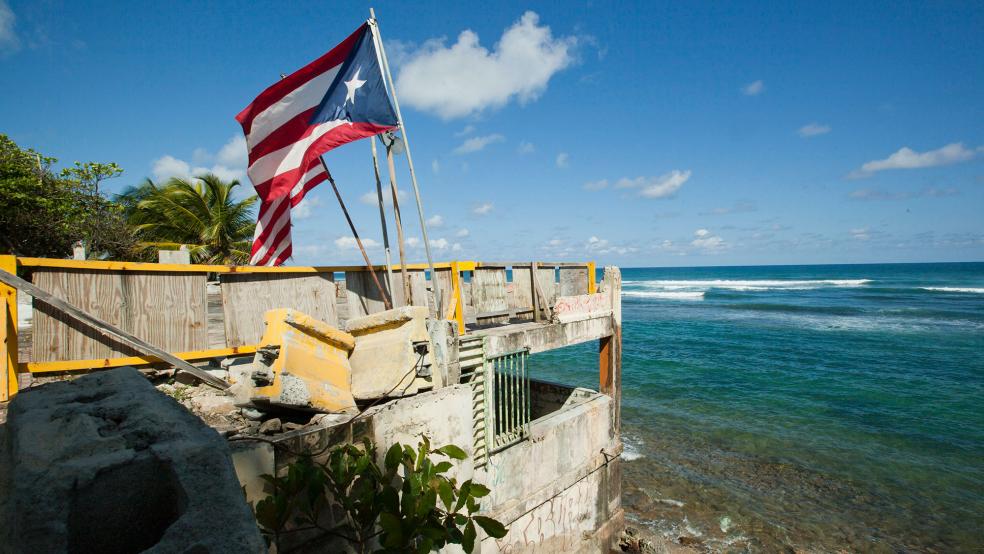Puerto Rico may soon be under the financial oversight of a congressionally appointed control board, thanks to 10 years of growing debt, outmigration and a declining economy. This board would be tasked with ending a fiscal free-fall that has been driven by a combination of federal tax policy, economic regulations, local financial mismanagement and a bloated public sector.
Were it not for Puerto Rico’s opaque accounting practices, we may have seen this coming in time to avoid such dire circumstances and such a drastic solution. The territory ’s crisis is uniquely rooted in 75 years of misguided U.S. policy interventions, but it still holds lessons for all of the states in the union.
Like the 50 states, Puerto Rico issues a Comprehensive Annual Financial Report (CAFR) each year to disclose its short- and long-run finances. Ideally these reports provide policymakers and the public with a clear picture of a government’s current position, underlying risks and future trends. In reality, even many policymakers lack the expertise to use these complicated documents.
Slideshow: The Financial Health of All 50 States, Ranked
The information is right in front of us, but if we don’t pay attention, we risk missing the warning signs of the next state or territorial fiscal crisis. In the newest edition of the Mercatus Center’s state fiscal rankings, Olivia Gonzalez and I take the most recent CAFR (from FY 2014) from each state and Puerto Rico, sort the comparable data and rank their fiscal health.
Not surprisingly, Puerto Rico ranks dead last. It has little cash to keep the lights on in the short-term. Its revenues only cover 88 percent of its yearly expenses. And the island’s total debt exceeds its GDP by 13 percent.
Right above Puerto Rico in the rankings are Connecticut (50), Massachusetts (49), New Jersey (48), Illinois (47) and Kentucky (46). Their fiscal numbers are not quite as alarming as Puerto Rico’s, though they also have little ready cash on hand. Each has a troublesome long-running habit of issuing debt to cover ongoing spending, along with a history of underfunding pensions. Several northeastern states are also dependent on the financial sector for revenue, exposing them to industry swings.
To be sure, these states have comparatively manageable debt and are on better footing than Puerto Rico. But they have something big in common: The faulty accounting that plagues Puerto Rico’s financial statements also obscures the full costs and risks of U.S. pension systems.
Related: The Best and Worst States For Taxes
Economists continue to stress that U.S. pensions are understating their debts by almost $2 trillion. Fiscal health depends not only on economic resiliency, but on how a government measures and manages its fiscal resources. With poor accounting, it’s possible for any state to gradually slip from sound to unstable.
When viewed in context (like rankings), CAFRs can tell us a lot. Digging deeper tells us even more.
Two of the top five states — Alaska (1) and North Dakota (4) — are flush with cash, revenues and assets. But they are highly dependent on oil revenues to cover spending. Shortly after their FY 2014 financial reports were published, oil prices started their plunge from $100 per barrel to the current level near $50. That translates into a significant drop in revenues, which they rely on to cover their spending.
Alaska ranks first, but only due to a reserve fund that is projected to dwindle in the coming years, meaning something has to give. State spending accounted for 28 percent of residents’ personal income in fiscal 2014, which is double the U.S. average of 13 percent. Now, Alaska has a multi-billion-dollar deficit to close, and lawmakers are considering reducing the resource rebate given to residents, re-instituting the income tax and rolling back oil and gas tax credits.
Related: The Worst States for Retirement 2016
The rest of the top five, Nebraska, Wyoming and South Dakota are on better footing, though like all states, they have room to improve.
So how does a state know when it hits the fiscal point of no return? As Alaska proves, it is possible to be flush with cash in one year and scrambling to close a budget deficit the next. Even if CAFRs only tell us so much, financial reporting is not just a paper exercise. We must use them as tools to solve problems before they leap off the balance sheet and into residents’ lives, rather than as a post-mortem.
Eileen Norcross is the director of the Mercatus Center at George Mason University’s State and Local Policy Project and author of the newest edition of “Ranking the States by Fiscal Condition.”




